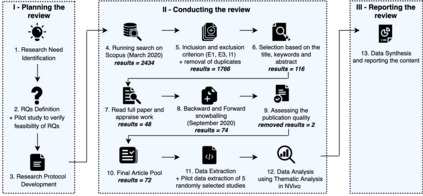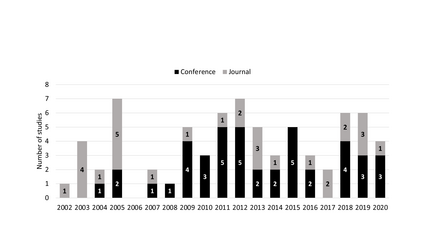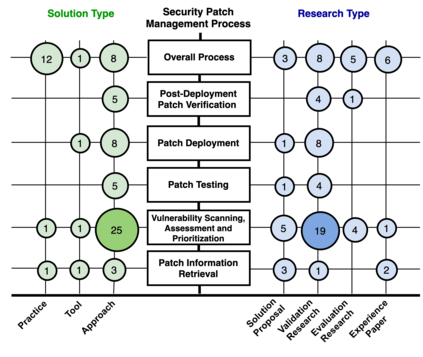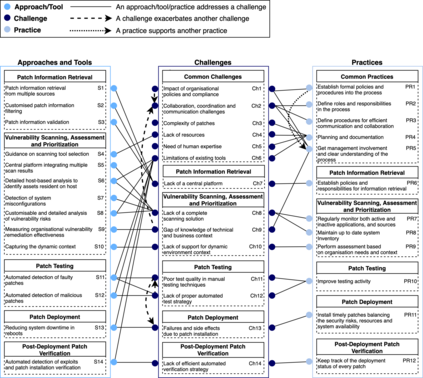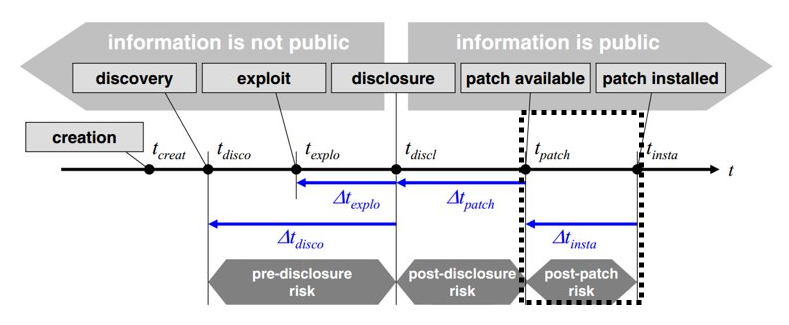Context: Software security patch management purports to support the process of patching known software security vulnerabilities. Patching security vulnerabilities in large and complex systems is a hugely challenging process that involves multiple stakeholders making several interdependent technological and socio-technical decisions. Objective: This paper reports our work aimed at systematically reviewing the state of the art of software security patch management to identify the socio-technical challenges in this regard, reported solutions (i.e., approaches and associated tools, and practices), the rigour of the evaluation and the industrial relevance of the reported solutions, and to identify the gaps for the future research. Method: We conducted a systematic literature review of 72 studies on software security patch management published from 2002 to March 2020, with extended coverage until September 2020 through forward snowballing. Results: We identify 14 key socio-technical challenges in security patch management with 6 common challenges encountered throughout the process. Similarly, we provide a classification of the reported solutions mapped onto the patch management process. The analysis also reveals that only 20.8% of the reported solutions have been rigorously evaluated in industrial settings. Conclusion: Our results reveal that two-thirds of the common challenges have not been directly addressed in the solutions and that most of them (37.5%) address the challenges in one stage of the process. Based on the results that highlight the important concerns in software security patch management and the lack of solutions, we recommend a list of future research directions. This research study also provides useful insights into different opportunities for practitioners to adopt new solutions and understand the variations of their practical utility.
翻译:方法:我们对2002年至2020年3月出版的72项软件安全贴合管理研究进行了系统的文献审查,通过前方雪球将覆盖面延长至2020年9月,结果:我们查明了安全贴合管理方面的14项主要社会技术挑战,在整个过程中遇到了6项共同挑战。同样,我们提供了报告中关于这方面社会技术挑战的分类,在补整管理进程中提出了报告的解决办法(即方法和相关工具及做法),分析还表明,只有20.8%的报告解决办法在工业环境中得到了严格的评价,而且报告的解决办法的工业相关性也得到了严格的评价。 结论:我们的结果显示,三分之二的共同挑战没有在解决方案中直接讨论,而大部分的实用性管理方法则在其中提出了重要的挑战。



